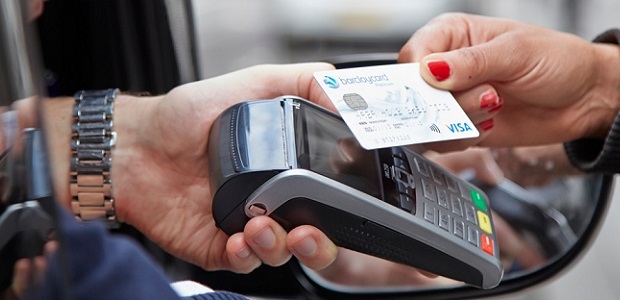
Individually, the average contactless user made 180 contactless payments in 2021, worth a total of £2,293, an increase from 2020 where users made on average 141 payments worth £1,640. In the UK, Barclaycard processes nearly £1 in every £3 spent using credit and debit cards, and in 2020 the company has processed over £267bn in transactions globally.
New data from Barclaycard, which sees nearly half of the nation’s credit and debit card transactions, reveals that 91.1 per cent of all eligible card transactions in 2021 were made contactlessly, with the total value of contactless payments made increasing by 40.2 per cent, year-on-year*.
The data also shows that shoppers increasingly opted for ‘touch and go’ at the check-out following the limit increase from £45 to £100 in October 2021, which resulted in the average number of transactions made contactlessly in the UK each day growing by 27.5 per cent**.
Growth across all sectors
All sectors have benefited from the contactless limit increase, with the payment method saving an average of seven seconds per transaction compared to Chip & PIN and 15 seconds compared to cash.
Analysis across sectors shows that the value of contactless transactions made in the entertainment sector, which includes cinemas, theatres, bowling alleys, arcades grew by 105.8 per cent, while bars, pubs and clubs drove an 83.4 percent increase year-on-year.
Other significant increases in the value of payments made include at sports and outdoor retailers (up 64.7 per cent), clothing stores (up 64.6 per cent) and takeaway and fast food outlets (up 39.2 per cent).
How consumers used contactless in 2021
Individually, the average contactless user made 180 contactless payments in 2021, worth a total of £2,293, an increase from 2020 where users made on average 141 payments worth £1,640.
As UK consumers finalised their festive purchases, Thursday 23 December 2021 was the busiest day for contactless transactions, where the value of eligible sales grew by 121.4 per cent, compared to the daily average of 2021.
Jose Carvalho, Head of Consumer Products at Barclaycard said: “Our data shows that many shoppers have welcomed the £100 increase to the contactless limit and are now choosing to pay this way for goods and services in store. Unsurprisingly, many consumers are also increasingly reluctant to touch cash or PIN pads when they go to shops which is why innovations that enable a ‘low-touch’ experience, such as contactless payments have really grown in popularity.”
Rob Cameron, CEO of Barclaycard Payments, said: “The increase to the £100 payment limit has been a great opportunity to take friction out of the purchase experience. This is especially the case in busy stores where queues can quickly build up; the faster that line moves through, the more likely shoppers are to have a good experience and want to come back. Speed at the checkout will often avoid shoppers going elsewhere, which is why the limit increase is a win-win for cardholders and merchants.”
____________
About the data
*Eligible transactions are defined as face-to-face / in-store transactions made with a credit or debit card, up to the value of the contactless limit – i.e. £45 prior to October 15 2021, and £100 from October 15 2021.
**Comparison of average number of contactless transactions made daily between October 15 2021 – December 31 2021, compared against January 1 2021 – October 14 2021.
A brief history of contactless payments:
2007: Barclaycard pioneers contactless payments in the UK with the OnePulse card, which could be used to pay at c22,000 payment terminals across the TfL network and in c6,000 retailers. The spending limit per transaction is initially set at £10.
2010: The Contactless payment limit increases from £10 to £15.
2011: The first mobile payment device enters the UK as Barclaycard and Orange join forces to launch Quick Tap, which lets users make payments by tapping their phone on a contactless payment reader.
2012: Barclaycard introduces PayBand, the UK’s first wearable payment device and also PayTag – a sticker less than a third the size of a credit card that sticks securely to the back of a mobile phone, turning it instantly into a contactless Barclaycard. The contactless payment limit also rises from £15 to £20 and contactless can also been used to pay for travel on London’s 8,500 buses.
2013: Annual contactless transactions reach £1bn for the first time.
2014: Barclaycard worked with TfL on the second phase of introducing contactless to London’s travel network by aiding the evolution of the yellow Oyster card readers to enable them to read contactless cards.
2015: Barclaycard creates the nation’s first payments fashion wearables. The spending limit per transaction rises from £20 to £30.
2019: Barclaycard processed 1 in 2 UK contactless transactions.
2020: UK and ROI contactless limit increases from £30/€30 to £45/€50.
2021: UK contactless limit increases from £45 to £100 on 15 October.
Banking 4.0 – „how was the experience for you”
„To be honest I think that Sinaia, your conference, is much better then Davos.”
Many more interesting quotes in the video below: